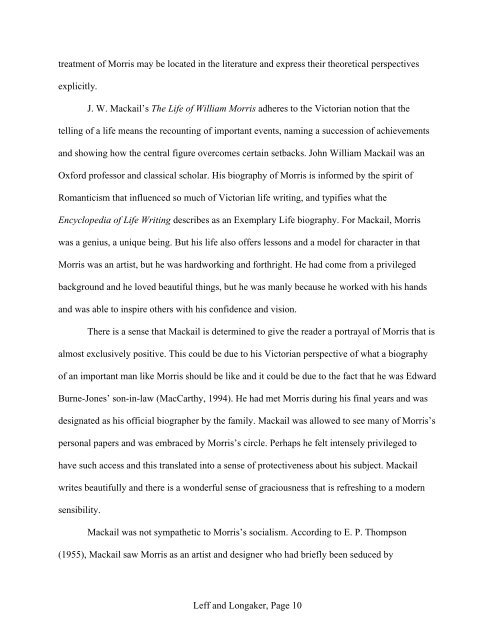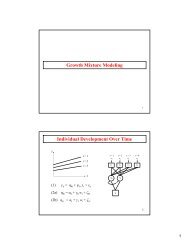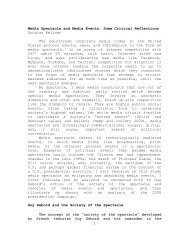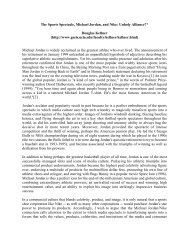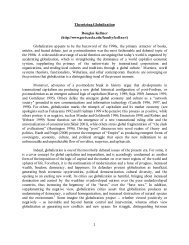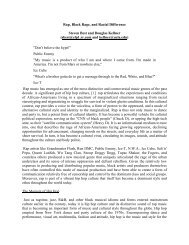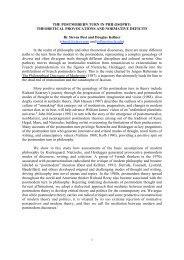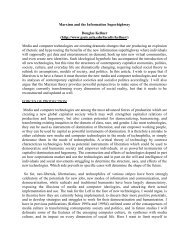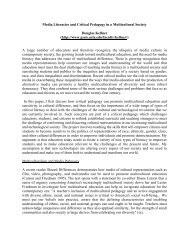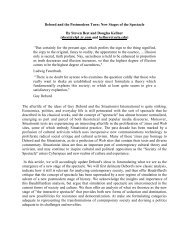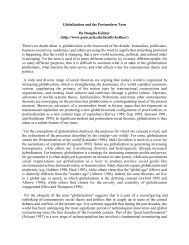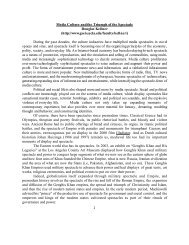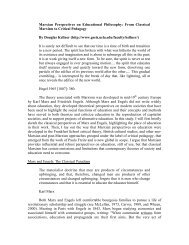Rachel Leff and Rachel Longaker IS281 Professor Maack ... - Ucla
Rachel Leff and Rachel Longaker IS281 Professor Maack ... - Ucla
Rachel Leff and Rachel Longaker IS281 Professor Maack ... - Ucla
You also want an ePaper? Increase the reach of your titles
YUMPU automatically turns print PDFs into web optimized ePapers that Google loves.
treatment of Morris may be located in the literature <strong>and</strong> express their theoretical perspectives<br />
explicitly.<br />
J. W. Mackail’s The Life of William Morris adheres to the Victorian notion that the<br />
telling of a life means the recounting of important events, naming a succession of achievements<br />
<strong>and</strong> showing how the central figure overcomes certain setbacks. John William Mackail was an<br />
Oxford professor <strong>and</strong> classical scholar. His biography of Morris is informed by the spirit of<br />
Romanticism that influenced so much of Victorian life writing, <strong>and</strong> typifies what the<br />
Encyclopedia of Life Writing describes as an Exemplary Life biography. For Mackail, Morris<br />
was a genius, a unique being. But his life also offers lessons <strong>and</strong> a model for character in that<br />
Morris was an artist, but he was hardworking <strong>and</strong> forthright. He had come from a privileged<br />
background <strong>and</strong> he loved beautiful things, but he was manly because he worked with his h<strong>and</strong>s<br />
<strong>and</strong> was able to inspire others with his confidence <strong>and</strong> vision.<br />
There is a sense that Mackail is determined to give the reader a portrayal of Morris that is<br />
almost exclusively positive. This could be due to his Victorian perspective of what a biography<br />
of an important man like Morris should be like <strong>and</strong> it could be due to the fact that he was Edward<br />
Burne-Jones’ son-in-law (MacCarthy, 1994). He had met Morris during his final years <strong>and</strong> was<br />
designated as his official biographer by the family. Mackail was allowed to see many of Morris’s<br />
personal papers <strong>and</strong> was embraced by Morris’s circle. Perhaps he felt intensely privileged to<br />
have such access <strong>and</strong> this translated into a sense of protectiveness about his subject. Mackail<br />
writes beautifully <strong>and</strong> there is a wonderful sense of graciousness that is refreshing to a modern<br />
sensibility.<br />
Mackail was not sympathetic to Morris’s socialism. According to E. P. Thompson<br />
(1955), Mackail saw Morris as an artist <strong>and</strong> designer who had briefly been seduced by<br />
<strong>Leff</strong> <strong>and</strong> <strong>Longaker</strong>, Page 10


